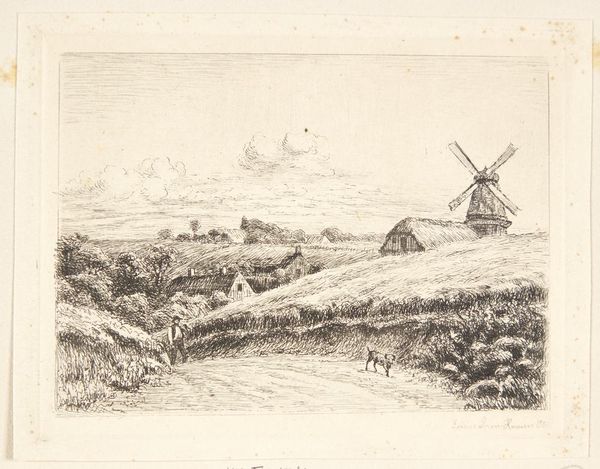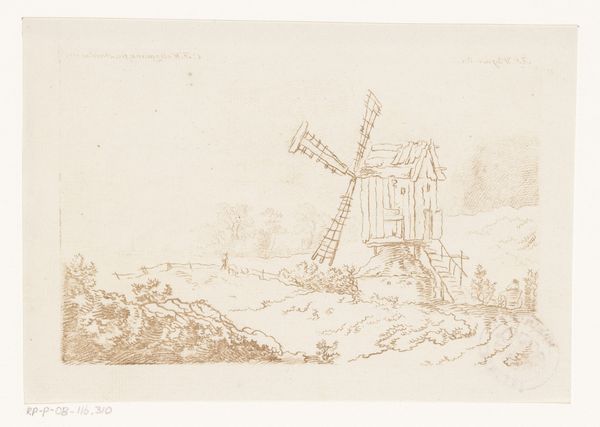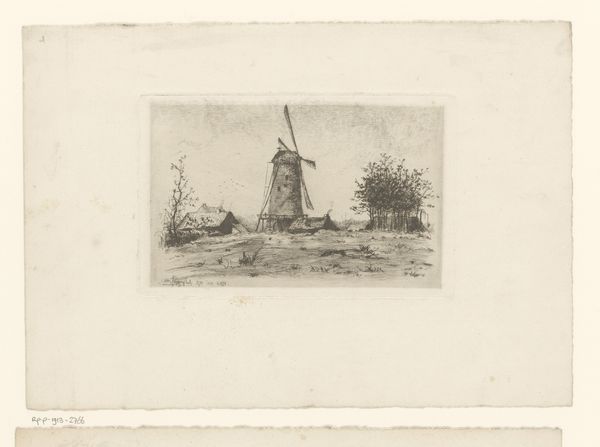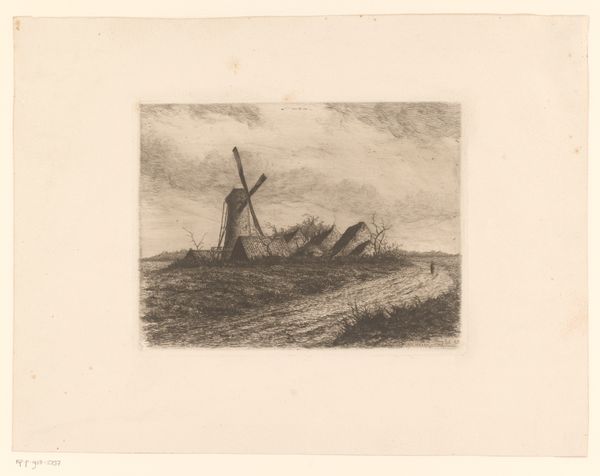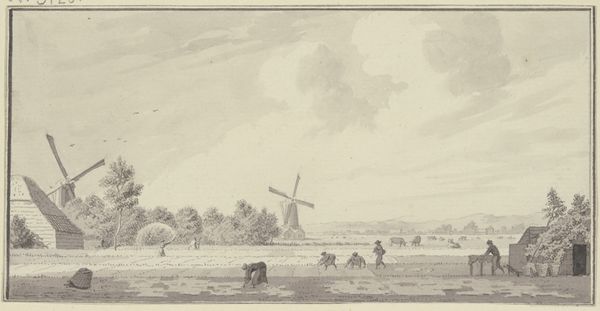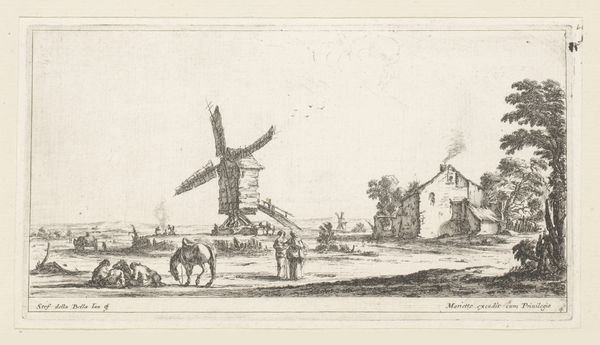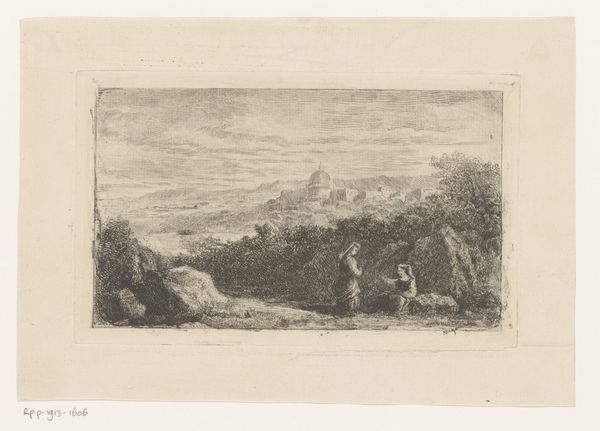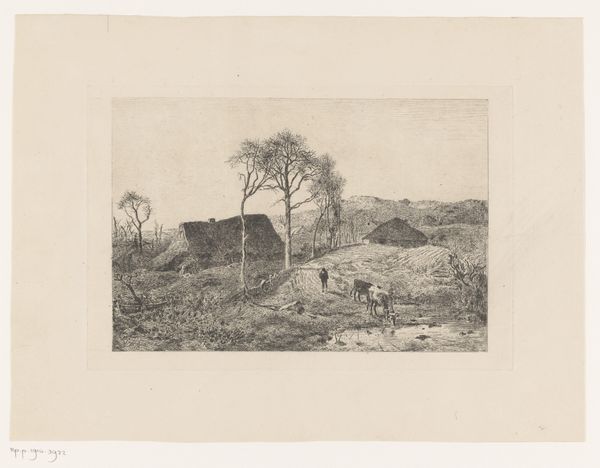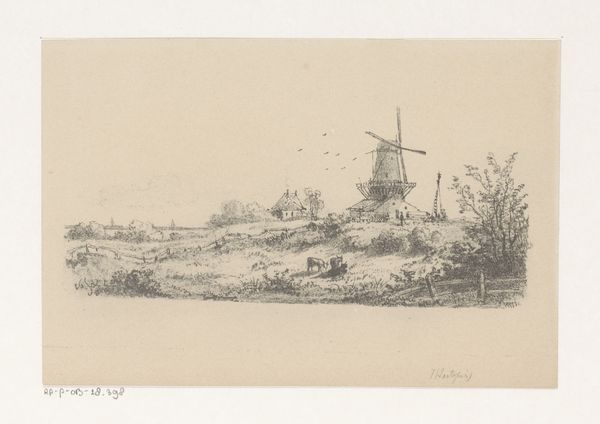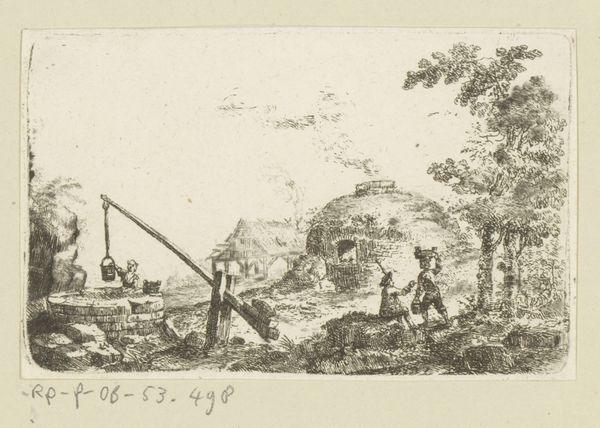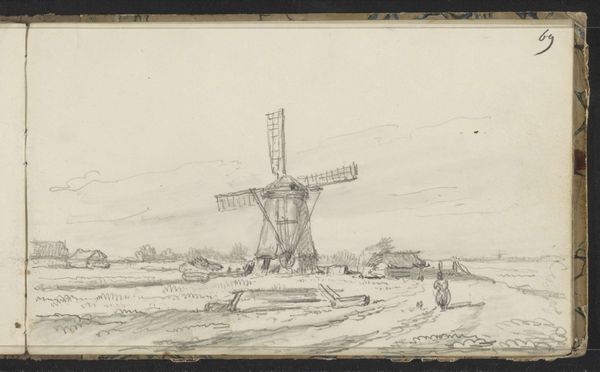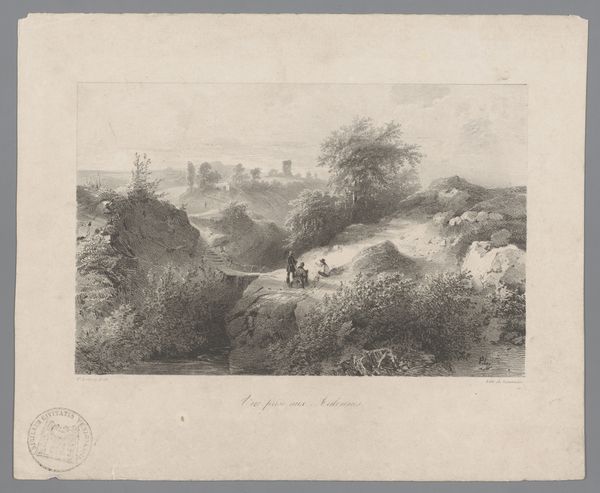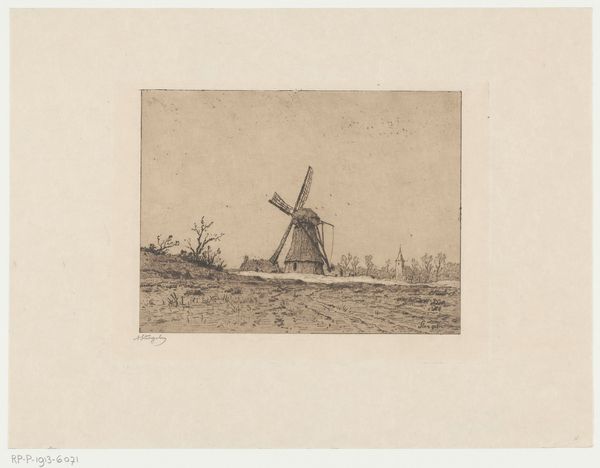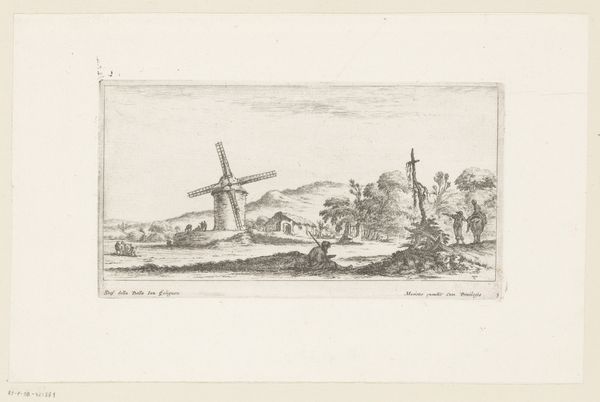
Dimensions: height 180 mm, width 250 mm
Copyright: Rijks Museum: Open Domain
Curator: Welcome. Here we have Henri-Joseph Harpignies' "Landscape with Mill Along a Sandy Path", likely created between 1850 and 1855. It's an etching, a type of print. Editor: My initial impression is one of quiet stillness. The tones are muted, the scene seems almost frozen in time. It definitely evokes a sense of rustic charm, but a melancholy charm. Curator: I'd say that's consistent with romanticism. While influenced by realism's focus on everyday scenes, it also leans heavily into evoking particular feelings towards nature and labor, but with more class conciousness and observation. There's something powerful in showing the humanity inherent to ordinary life, moving against aristocratic narratives, right? Editor: Indeed, it certainly seems steeped in symbolism, with that prominent windmill. What do you see there, other than a building to grind grain? Curator: The windmill is multifaceted, in how it is and isn't still relevant, even at that point in time. Is it meant to be the idyllic countryside—the symbol of providing and a simple, almost humble life? Editor: It’s almost biblical, how this is contrasted with people who still occupy an idyllic space. But consider how its image can reflect notions of progress or, in a Foucauldian sense, a shift in societal structures... almost as if there are different people here being juxtaposed based on which time or type of social paradigm that they exist under. Curator: The composition really drives that tension home; placing the mill, seemingly disused and slightly overgrown, on one side, with the small family or farming group, just across. How the winding sandy path doesn’t simply bring both halves together. I guess that means the symbol doesn’t easily carry that. The weight falls over a potential shift. It's about more than rural life itself, right? Editor: Precisely. The path could symbolize life's journey or, even more broadly, the impact of technological advances on these people. It invites contemplation. Curator: Thank you. Editor: Indeed, a lovely piece offering some layers to digest, even today.
Comments
No comments
Be the first to comment and join the conversation on the ultimate creative platform.
